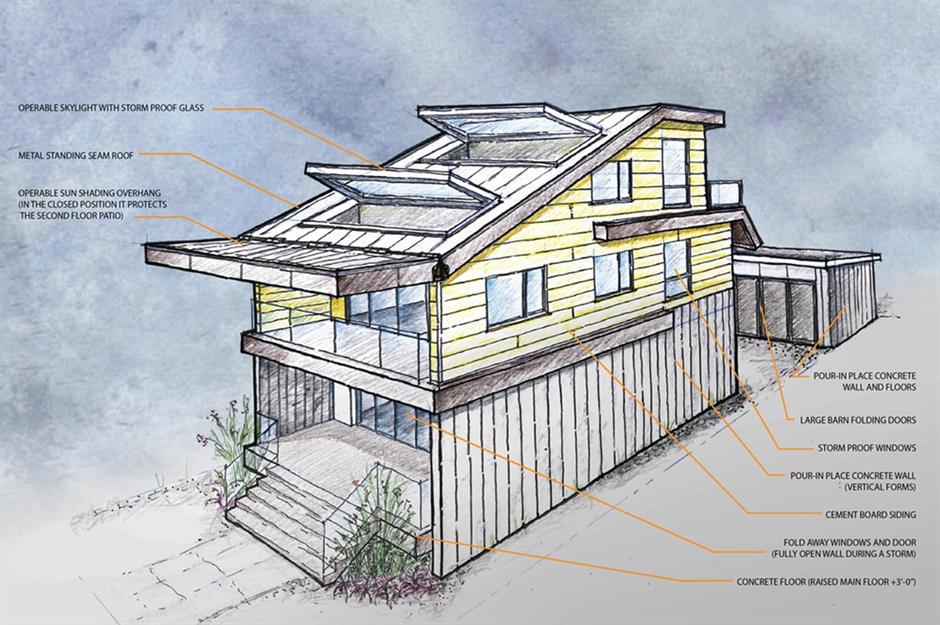People who want to build a home in areas prone to hurricanes should consider making their properties hurricane-resistant. Making a home hurricane-resistant requires proper planning, which means the initial design should take into account the possibility of a hurricane hitting the area.
The hurricane season depends on the location of the property. Properties located along the Atlantic coast can expect hurricanes to come between June 1st and November 30th. On the other hand, the Pacific hurricane season is between May 15 and November 30.
Here are some things to consider when building a hurricane-resistant home.
Build a Strong Roof
The first thing a person should do is to ensure the roof of the house is strong. Footage of past hurricanes saw homes with their roofs blown off since they were not strong enough. A weak roof can even be damaged in winds of less than 50 miles per hour.
The best material a homeowner can go with for the roof is metal. Using reliable metal roofing may be costly, but it will be worth it in the end. Metal roofing is strong enough to protect the home against 140-mile-per-hour winds. These metal roofs are normally made of zinc, aluminum, steel, or copper. They also last at least 50 years and are stronger compared to asphalt shingles.
If metal roofing is unavailable, homeowners can also opt for architectural shingles. This type of roofing is strong enough to withstand winds reaching up to 130 miles per hour. They can also last up to three decades. These roofing types are thicker and heavier than conventional asphalt shingles, making them a good second option to make a home hurricane resistant.
Install Durable Windows
It is also important to install high-impact, hurricane-resistant windows all around the house. Since the windows are among the most vulnerable areas in the house, this is a no-brainer. These types of windows are break-resistant and can withstand projectiles speeding up to around 150 miles per hour.
Additionally, these types of windows also keep water from entering the house. This means the cost of the insurance premiums of the homeowner will go down. These days, the building codes of many coastal cities require high-impact windows for newly-built homes.
Homeowners should look for high-impact windows with a 50 Design Pressure (DP) rating. These windows are strong enough to withstand winds that can reach up to 200 miles per hour. They can also resist pressures of up to 75 pounds per square foot.
If the cost of high-impact windows is too high, homeowners can also install film into the windows. While it cannot stop projectiles from hitting the windows, it can prevent the glass from shattering when the projectile hits it.
Additionally, homeowners can also use storm shutters to stop water and wind from entering the home while allowing the light to come in. The market has several storm shutters, and they are cheaper to install than high-impact windows.
Strengthen Entry Points
Aside from the windows, the house also has several other entry points, including the garage doors and front doors. Homeowners should strengthen these areas, particularly the garage door, to prevent air pressure from building and blowing the roof off.
The homeowner can install heavy-duty garage doors with steel reinforcements. These components strengthen the door and increase its durability. But the homeowner should make sure the garage doors meet local code requirements.
To protect the doorways, the homeowner can use fiberglass on the door since they are good at resisting hurricanes. The material also keeps the rain out better than steel or wooden doors.
Secure the HVAC
Protecting the heating, ventilation, and air conditioning (HVAC) system is another important task for the homeowner. Hurricanes can easily damage the HVAC system and cost the homeowner thousands of dollars to repair or replace it. To reduce the damage, the homeowner can use a protective cage to secure its base. Covering it also protects it from debris or projectiles that may fly in its direction. The homeowner should also remove bushes and foliage around the HVAC unit.
It is also advisable to have a backup generator ready in case of a power outage. The homeowner can also turn off the circuit breakers of the HVAC system during the storm to protect it from damage. Once the storm is over, the homeowner should check the HVAC unit for any visible damage. He should not turn it on if he finds water around the unit. It is also advisable to let a professional check the unit before turning the unit on.
Building a home in the coastal area may be nice, but homeowners should make the necessary preparations in case hurricanes regularly visit the area.

